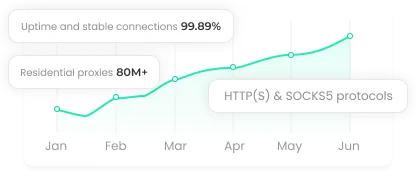How HTTP Headers Work and Why They Matter
Mismanaged HTTP headers are behind nearly 80% of web performance problems. It’s easy to overlook them, but many caching glitches, incorrect content localization, and unexpected authorization failures trace back to these tiny pieces of data. Headers silently govern routing, security, compression, and even the language your site presents. Understanding and mastering them is critical, not optional.

The Anatomy of an HTTP Header
Every time your browser requests a website, it doesn't just ask for the URL. It sends a set of instructions—HTTP headers—that tell the server how to handle the response. They're not the payload itself (that video, page, or file you requested). They're the roadmap for how the payload should be delivered.
On the server side, response headers provide information about the resource, including file size, encoding, caching, connection type, and more. Headers have a simple structure, consisting of a key and a value. Yet without them, communication between client and server would be chaotic.
Different Types of HTTP Headers
Headers aren't one-size-fits-all. They fall into four main categories:
General Headers: Apply to both requests and responses; control things like caching and connection behavior.
Request Headers: Tell the server about the client, preferences, and conditional requests.
Response Headers: Provide metadata about the server and returned resources.
Entity Headers: Describe the body content: length, type, language, and more.
Common General Headers
Cache-Control: Controls caching behavior
Connection: Defines connection handling (keep-alive or close)
Date: Server date and time
Transfer-Encoding: Data encoding method
Upgrade: Suggests switching protocols
Warning: Alerts on caching or data processing issues
Key Request Headers
Request headers dictate how the server responds:
User-Agent: Reveals browser, OS, and client info.
Accept-Language: Requests content in a preferred language.
Authorization: Sends credentials securely.
Cookie: Stores session or preference data.
Range: Requests only part of a file, useful for resuming downloads.
Important Response Headers
ETag: Unique identifier for content versioning.
Cache-Control: Guides caching for performance.
Set-Cookie: Initiates or updates user sessions.
Location: Redirects users to another URI.
Retry-After: Suggests when to retry requests after errors.
Why HTTP Headers Matter
Headers aren't just technical. They're strategic. Here's how they deliver value:
Control Data Transfer: Specify type, size, and format of data.
Identify Clients and Servers: Track traffic, stats, and routing.
Manage Caching: Avoid unnecessary requests, improve speed, reduce server load.
Secure Resources: Authorization, proxy checks, and authentication.
Manage Sessions: Cookies store vital user session data.
Optimize Localization and Media Delivery: Serve content based on language, encoding, and format.
Real-World Applications
Data Scraping: Mimic real users by rotating User-Agent headers. Use Accept-Language to grab localized content. Proxy headers like Forwarded manage routing. This keeps scraping safe and consistent.
Working Within Resource Limits: Respect rate limits, authorization, and required headers. Rotate proxies to prevent blocks. Proper headers ensure access and accuracy.
Optimizing Traffic: Use Range or Accept-Ranges to download only required data. If-Modified-Since prevents sending unchanged content. Compress with Accept-Encoding: gzip to reduce bandwidth. Result? Faster, cheaper, and leaner requests.
Security and API Protection: Combine Authorization with Origin and Content-Security-Policy. Protect APIs, prevent spoofing, and maintain user privacy.
Testing and Debugging: Simulate different browsers (User-Agent), trace request paths (Via, X-Request-ID), and analyze caching behavior. Headers allow precise testing for load, scalability, and resilience.
How to Inspect HTTP Headers
Chrome DevTools: Press F12 → Network tab → Refresh. Click a file, check the "Headers" tab.
Online Tools: Simple, visual alternatives:
httpbin.org/headers
reqbin.com
webconfs.com/http-header-check.php
free.geonix.com/en/http-headers
Best Practices for HTTP Headers
Rotate Headers: Change User-Agent or other headers to simulate varied traffic and distribute load.
Update Headers: Keep values current with software and protocol versions.
Ensure Consistency: Avoid conflicting headers or rogue additions from proxies.
Regular audits prevent errors, access issues, and performance bottlenecks.
Conclusion
HTTP headers are the unsung heroes of the web. They control data flow, security, performance, and user experience. Mastering them gives developers, administrators, testers, and security pros precise control over web traffic.
Properly configured headers make web applications predictable, fast, and secure. Neglecting them can cause even flawless code to fail dramatically. Begin auditing, optimizing, and rotating headers to ensure your web services perform at their best.

















































